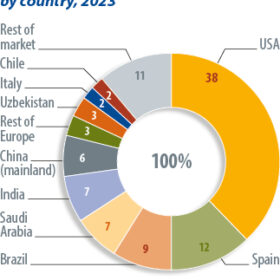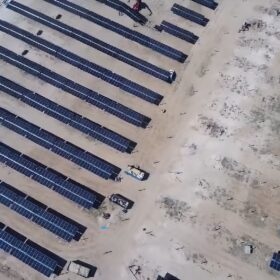The $70 million Clean Energy Finance Corportation (CEFC) commitment to Flinders Port Holdings (FPH) is the first CEFC direct finance in the maritime sector and the first green financing of container stevedoring operations in Australia.
The CEFC capital will finance electrification initiatives across FPH’s seven South Australian ports to demonstrate a decarbonisation pathway for the emissions intensive sector and enable Australia to benefit from the global net zero maritime transition.
FPH will introduce a range of measures to transition and accelerate towards low and zero emissions technologies and operations for customers.
FPH will investigate transitioning from hybrid straddle carriers to an electric Automated Rubber Tyre Gantry at its Flinders Adelaide Container Terminal, in what would be a significant change to the way it moves containers, and an Australian first.
Other measures include the replacement of internal combustion engine light vehicles and vessels with electric and hybrid alternatives, and installation of solar PV to reduce power consumption across the energy intensive sites. In addition, FPH will investigate the potential of cleaner shore-based power by connecting berthed ships to the grid to replace diesel bunker fuel.
CEFC CEO Ian Learmonth said: “The shipping sector powers the global economy and represents an enormous opportunity to drive down transport emissions while ensuring it continues to deliver in the future net zero economy.
“Stevedoring operations are traditionally difficult to abate and as both an owner and operator of multiple ports, FPH is in a unique position to catalyse change. Our work with FPH will demonstrate the potential for a more sustainable maritime sector, setting a precedent for decarbonisation across some 70 Australian ports.
“The actions taken by FPH today place it at the forefront of the industry, giving it a competitive edge as the world transitions to net zero emissions.”
Shipping makes a significant contribution to the world economy, with more than 80% of global trade carried by sea. It is one of the most cost-efficient methods of goods transport but also one of the most emissions intensive: it is estimated that the international shipping industry emits 706 million tonnes of carbon annually, or about 2% of global energy-related emissions. In 2022, emissions from the international shipping sector grew by 5%, continuing the rebound from the sharp decline in 2020.
In 2021–22, Australia’s domestic maritime sector emitted around two million tonnes of greenhouse gas emissions. In addition, heavy transport accounts for some nine per cent of Australia’s total greenhouse gas emissions.
The CEFC finance will help fast track FPH’s net zero emissions targets for Scopes 1, 2 and 3. It has committed to reach net zero for Scopes 1 and 2 by 2040, and Scope 3 by 2050.
FPH CEO Stewart Lammin said: “At Flinders Port Holdings, sustainability is one of our guiding philosophies in the way we operate and in our future planning and development. Our aim is to be recognised as a leader in sustainable port development and operations and to create a business we can continue to be proud of, contributing to better outcomes for future generations.”
“We value and appreciate the support of the CEFC in assisting us to achieve our objectives and for the opportunity to collaborate and share knowledge across sectors.”
CEFC Head of Infrastructure Julia Hinwood said: “The transition to cleaner port operations and vessel technologies requires considerable investment in new infrastructure, potentially disrupting established shipping practices and posing significant financial challenges.”
“By helping finance this important decarbonisation work, we are demonstrating a credible pathway for ports and port operators to reduce emissions and remain competitive, while protecting this critical sector of the economy.”
Australia has signed up to efforts by the International Maritime Organisation (IMO) to decarbonise shipping. The IMO has committed to reducing total annual greenhouse gas emissions from shipping by at least 50% by 2050.






By submitting this form you agree to pv magazine using your data for the purposes of publishing your comment.
Your personal data will only be disclosed or otherwise transmitted to third parties for the purposes of spam filtering or if this is necessary for technical maintenance of the website. Any other transfer to third parties will not take place unless this is justified on the basis of applicable data protection regulations or if pv magazine is legally obliged to do so.
You may revoke this consent at any time with effect for the future, in which case your personal data will be deleted immediately. Otherwise, your data will be deleted if pv magazine has processed your request or the purpose of data storage is fulfilled.
Further information on data privacy can be found in our Data Protection Policy.